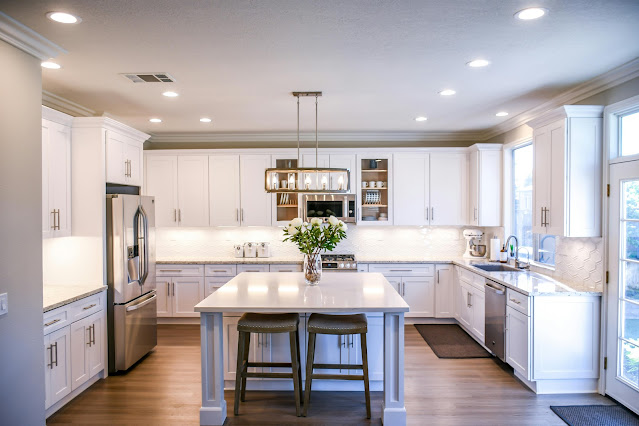Upgrading your home to be more energy-efficient is a proactive step towards sustainability and financial savings. With the rise in energy costs and the growing concern for the environment, homeowners are seeking ways to reduce energy consumption and enhance comfort. This article will explore several key upgrades that not only boost your home's efficiency but also add to its value and livability.
1. Upgrade to Energy-Efficient Windows
Replacing old, leaky windows with energy-efficient models is one of the most impactful changes a homeowner can make. Energy-efficient windows are designed to prevent heat from escaping during the winter and keep cool air inside during the summer. This upgrade not only improves the comfort of your home but also reduces the strain on your heating and cooling systems, leading to lower energy bills. With advancements such as double-glazing, low-E coatings, and improved framing materials, these windows provide superior insulation compared to their traditional counterparts.
2. Modernize Your Bathroom
The bathroom is a key area where water and energy efficiency can be improved significantly. Modernizing your bathroom with low-flow toilets, showerheads, and faucets can drastically reduce water usage. For those looking to make substantial upgrades, consider hiring a bathroom remodeling company. Look up the keyword bathroom Remodeling Company near me on a search engine and you'll find experts like Luxury Bath Texoma who specialize in installations that maximize efficiency without sacrificing performance or style.
3. Install a Programmable Thermostat
Upgrading to a smart or programmable thermostat can lead to substantial savings in energy costs. These devices allow you to customize heating and cooling operations according to your schedule, ensuring that energy is not wasted when no one is home. By setting the thermostat to lower the temperature during the winter nights or increase it during summer days when the house is empty, you can significantly decrease your utility bills. Additionally, many modern thermostats offer remote control via smartphone apps, providing convenience alongside efficiency.
4. Switch to LED Lighting
LED lighting is one of the easiest and most cost-effective upgrades for energy efficiency. LEDs use at least 75% less energy and last 25 times longer than incandescent lighting. Switching to LED bulbs throughout your home can reduce the amount of energy used for lighting dramatically. Additionally, LEDs offer a range of colors and brightness levels, allowing for customization of each room according to your aesthetic preferences and functional needs.
5. Enhance Insulation
Proper insulation is critical in minimizing heat loss during winter and heat gain during summer. Enhancing the insulation in key areas such as the attic, walls, and basements can have a profound impact on your home’s energy efficiency. This upgrade involves checking for any gaps or leaks and adding higher-quality insulation materials where necessary. Not only does this help maintain a consistent temperature throughout your home, but it also reduces the need for continuous heating and cooling, leading to lower energy consumption and greater comfort.
6. Upgrade Appliances to Energy Star Rated
Upgrading to Energy Star rated appliances is an effective way to increase your home’s energy efficiency. These appliances are designed to use less water and power compared to standard models, which can lead to significant savings on your utility bills. Consider replacing older models of refrigerators, dishwashers, and washing machines with newer, energy-efficient ones. Not only do these appliances perform better, but they also reduce your home’s overall environmental impact by consuming fewer resources.
7. Install Solar Panels
Installing solar panels is a substantial investment that pays dividends over time, both financially and environmentally. Solar panels convert sunlight into electricity, significantly reducing your dependence on non-renewable energy sources and decreasing your electricity bills. Many regions offer incentives such as tax breaks and rebates, which can help offset the initial costs. Additionally, the presence of solar panels can increase the market value of your home, making it an attractive option for energy-conscious buyers.
8. Invest in a Tankless Water Heater
Tankless water heaters are an excellent upgrade for those looking to boost energy efficiency. Unlike traditional water heaters that continuously heat and reheat water, tankless models heat water on demand. This results in less wasted energy and ensures that you only pay to heat the water you use. Furthermore, tankless water heaters typically have a longer lifespan than their conventional counterparts, offering better performance and fewer replacements over time.
9. Seal and Weatherstrip Doors and Windows
Sealing leaks and adding weatherstripping to doors and windows is a simple yet effective way to enhance your home’s energy efficiency. These small gaps can lead to significant heat loss in the winter and heat gain in the summer, forcing your HVAC system to work harder. By sealing these leaks, you can maintain more consistent indoor temperatures and reduce the strain on your heating and cooling systems, thereby saving energy and money.
10. Update Your HVAC System
If your HVAC system is outdated, it may be inefficient by today's standards. Upgrading to a more efficient system can significantly reduce energy consumption and enhance indoor comfort. Modern HVAC systems are designed to be more energy-efficient and can be tailored to the specific needs of your home. Regular maintenance and timely upgrades can keep these systems running efficiently, further reducing your energy costs and extending the lifespan of the equipment.
Conclusion
Making your home more efficient is a proactive approach that benefits not just your wallet but also the environment. By implementing these imperative upgrades, from simple fixes like LED lighting and sealing leaks to larger investments like solar panels and modern HVAC systems, you can transform your living space into a model of sustainability and efficiency. Each step not only contributes to reducing your home's energy consumption but also increases its overall value, making it a smart move for any homeowner.



0 Comments:
Post a Comment
"Pleasant words are as a honeycomb: sweet to the soul and health to the bones." Proverbs 16:24